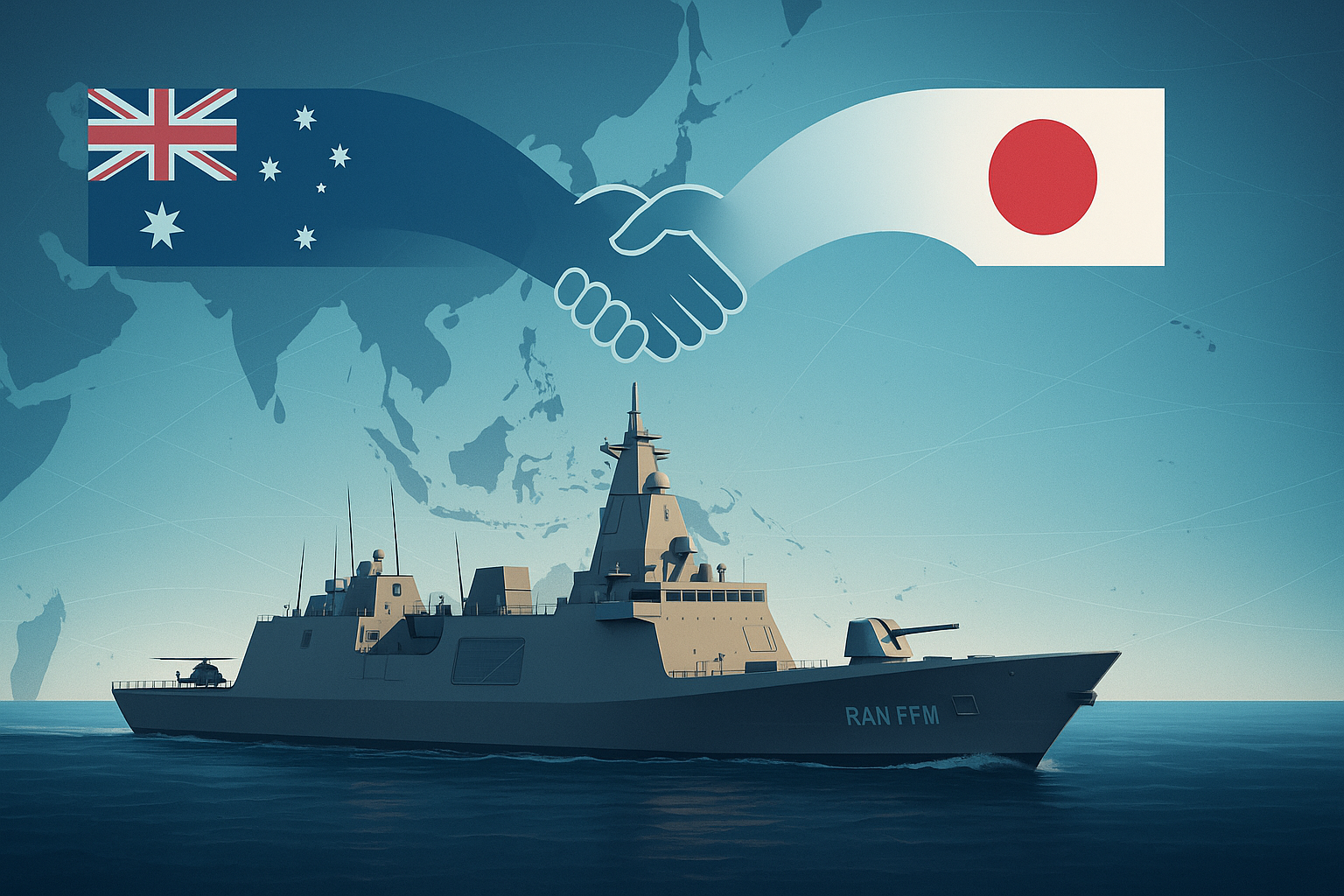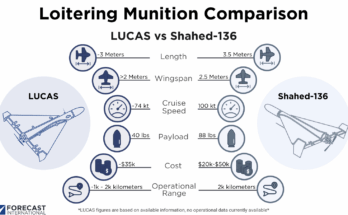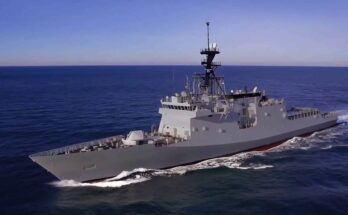
On August 5, the Australian government announced its decision to adopt Japan’s upgraded Mogami-class frigate design to fulfill the Royal Australian Navy’s (RAN) requirement for a new class of six general-purpose warships. This decision marks a significant milestone for both countries—providing the RAN with a capable and timely maritime asset while signaling a breakthrough for Japan’s ambitions in the global defense export market.
Yet beyond the technical and industrial considerations, the announcement underscores a deeper strategic alignment between Australia and Japan – two key Asia-Pacific democracies increasingly aligned in response to the growing assertiveness of the People’s Republic of China.
Shared Concerns, Shared Objectives
Australia and Japan have steadily deepened their security cooperation over the past two decades. Both nations are alarmed by China’s military expansion and its coercive tactics to dominate regional sea lanes and project power across the Indo-Pacific. These concerns have been amplified in recent months, as the People’s Liberation Army has conducted exercises near or around both nations’ maritime zones.
The two countries signed a Joint Declaration on Security Cooperation in 2022, formalizing their growing defense ties. However, both remain cautious of shifting signals from Washington, their mutual ally, regarding long-term regional commitments – making bilateral partnerships like this even more vital.
For Australia: Capability, Speed, and Industrial Gain
For the RAN, the selection of the improved Mogami-class means acquiring a highly capable, multi-mission platform based on a design already proven in service with Japan’s Maritime Self-Defense Force (JMSDF). The new frigates will replace the aging ANZAC-class ships and provide a lower-tier complement to more advanced surface combatants in Australia’s future naval force mix.
By opting for an off-the-shelf platform, Australia expects a faster acquisition timeline. The first frigate is projected to be operational by 2030 – an accelerated schedule compared to more customized procurement models. Moreover, under the government’s plan, at least half the class will be built at the Henderson shipyard in Western Australia, ensuring continuity and momentum for the country’s naval shipbuilding sector.
For Japan: A Long-Sought Defense Export Breakthrough
For Japan, the Mogami selection is not just a commercial success but a strategic breakthrough in its quest to become a more prominent player in global defense markets. It is Japan’s most significant arms export deal since it lifted self-imposed restrictions on defense sales in 2014.
Tokyo’s earlier attempt to secure a major Australian contract—the SEA 1000 Future Submarine program—ended in disappointment when Canberra chose France’s Shortfin Barracuda over Japan’s proposed variant of the Soryu-class submarine. That loss highlighted challenges in Japanese industrial diplomacy and its lack of export experience.
Since then, Japan has recalibrated its approach. It has streamlined regulations, built stronger industrial outreach, and demonstrated greater flexibility in navigating foreign procurement processes. The AUD10 billion ($6.5 billion) Mogami deal reflects this new, more pragmatic posture.
A Foundation for Long-Term Strategic Integration
The implications of this deal extend beyond hardware. Both Australia and Japan seek to safeguard vital maritime trade routes and counterbalance growing Chinese naval activity. While they lack a formal defense treaty, the two are bound by a reciprocal access agreement and overlapping defense ties with the United States. In this sense, the Mogami acquisition not only reinforces national capabilities but also strengthens the trilateral security architecture in the Indo-Pacific.
As Canberra accelerates its naval modernization, and Tokyo becomes more comfortable playing a proactive defense role abroad, this frigate deal could serve as a model for future cooperation—encompassing not just platforms, but also shared doctrine, logistics, and co-development initiatives.
Bottom Line
The Mogami-class selection is more than just a frigate contract—it’s a geopolitical signal. It tightens the strategic bond between two front-line U.S. allies, offers a pathway for deeper defense-industrial collaboration, and enhances the region’s collective capacity to deter coercion and preserve stability. In the evolving Indo-Pacific power equation, this is a quiet but consequential shift.
Dan Darling is Forecast International’s director of military and defense markets. In this role, Dan oversees a team of analysts tasked with covering everything from budgeting to weapons systems to defense electronics and military aerospace. Additionally, for over 17 years Dan has, at various times, authored the International Military Markets reports for Europe, Eurasia, the Middle East and the Asia-Pacific region.
Dan's work has been cited in Defense News, Real Clear Defense, Asian Military Review, Al Jazeera, and Financial Express, among others, and he has also contributed commentary to The Diplomat, The National Interest and World Politics Review. He has been quoted in Arabian Business, the Financial Times, Flight International, The New York Times, Bloomberg and National Defense Magazine.
In addition, Dan has made guest appearances on the online radio show Midrats and on The Media Line, as well as The Red Line Podcast, plus media appearances on France 24 and World Is One News (WION).




